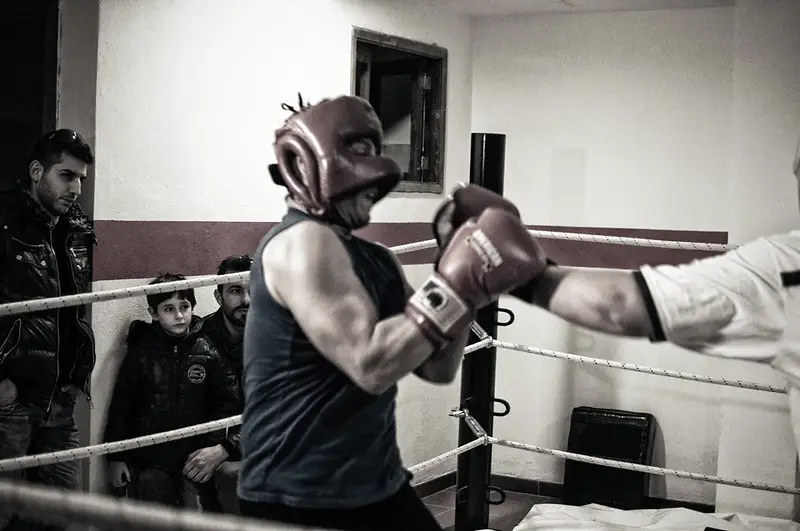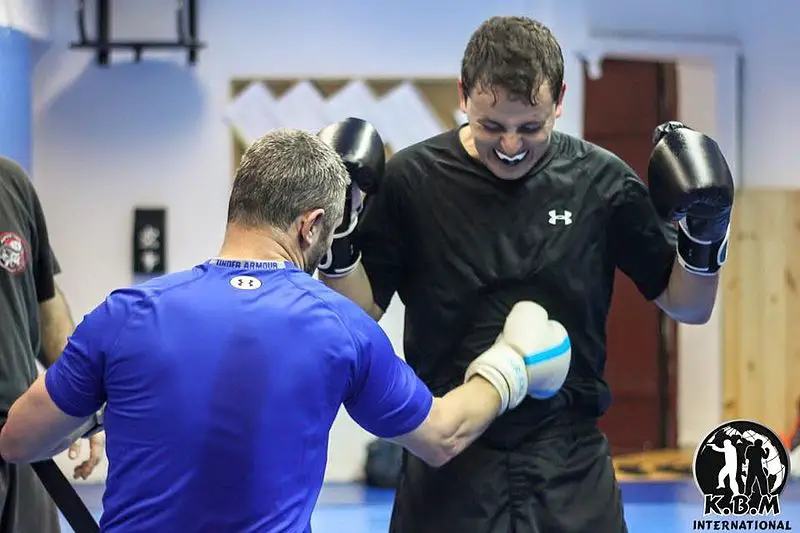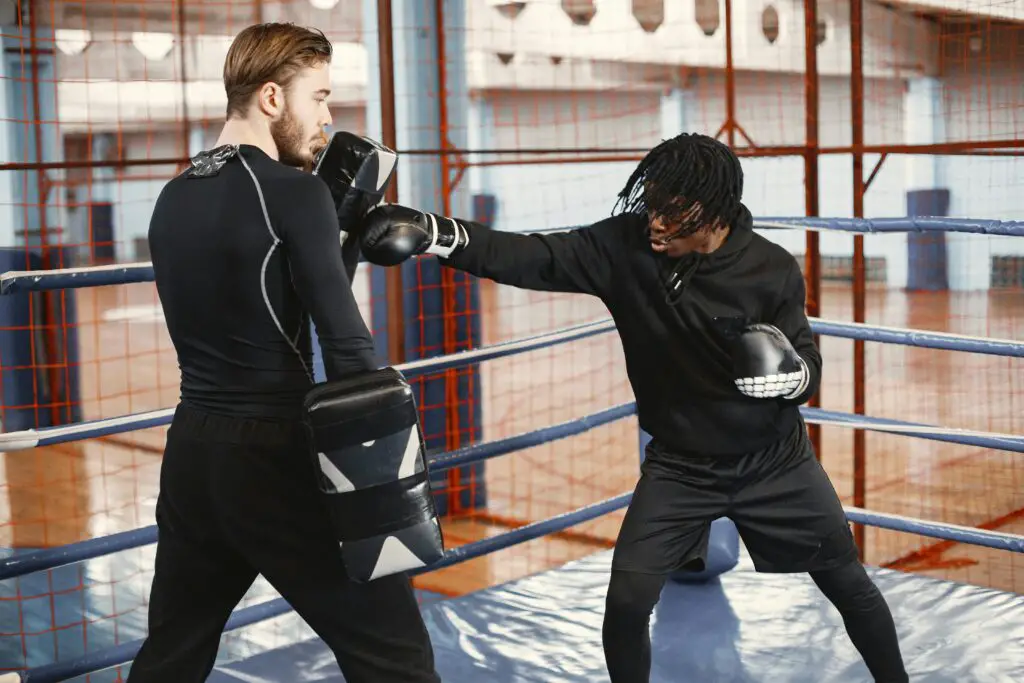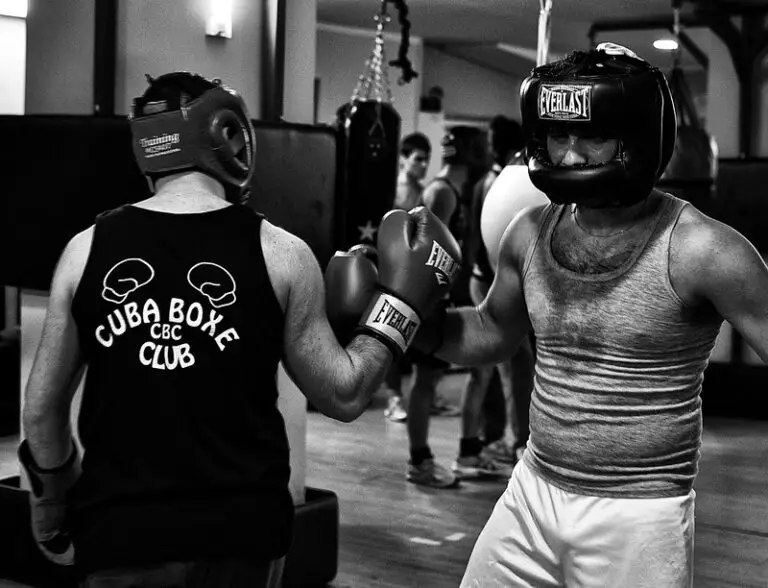Sparring involves intense physical contact between two training partners and is known as the best training method for teaching a person how to apply techniques in real combat. Though productive, many people find this aspect of training intimidating and wonder how to overcome the fear of sparring?
The good news is — you are not alone. Fear of sparring is normal, and there is a methodical way you can overcome it through physical and mental preparations. Your task is to stay persistent, work hard, and enjoy the process.
Following is a proven guideline on how to overcome the fear of sparring which many of us used to a great effect.
Step 1: Fear Of Sparring is Normal
Every normal person is afraid of sparring. Some people are open about it, some are not. In the end, it is an intense activity that includes physical contact with two people striking or grappling against each other so being afraid is completely normal.
The only difference is the intensity of your fears and how you react to them. Some people have a tiny dose of fear and need less time to adapt to the unpredictable nature of sparring. The other ones might be terrified to spar and even freeze during the first session. That’s all normal. Everyone is facing fears in martial arts to a certain degree.

Then, there is the most important distinction. People who face their fears head-on, and the ones trapped inside of it, and never really unleash their potential. And that’s why we are here.
Considering you are here reading this article, it’s likely that you are aware that the fear of sparring is holding you back. So let’s work on beating it.
Step 2: Sparring is not a fight
Sparring is not a fight, and it’s important to understand the distinction between the two. It is a training method that provides students with the chance to simulate real scenarios in a controlled and safe environment.
The main focus of each session is on learning and growing as a fighter, not fighting. Students use this as a chance to spot their strengths and weaknesses, improve form, and develop strategies. Also, they improve other skills such as timing, reaction time, and instincts.
There is no such thing as “losing” in sparring. In fact, it is far better to “lose” and be overwhelmed by a more skilled partner in sparring than in an actual self-defense situation or competition match.
Unlike a real fight, it encourages cooperation and mutual growth. It fosters camaraderie as practitioners help each other learn from their experiences.
Most people are afraid of hard sparring. But you have to realize that hard sparring is for students with years of experience preparing for competition.
Step 3: Pick the right martial arts school
When it comes to overcoming your fears of sparring, one of the most important aspects is finding an environment that prioritizes safety and supportive learning. A proper martial arts school.
This means looking for a school that not only teaches the techniques and skills but also ensures the well-being of its students.
Before signing up, be sure to attend a trial class, or pay for a monthly membership. Ensure you are in a place where coaches respect your boundaries and won’t force you to do anything against your will. They don’t have the right to do so.
Martial arts training should be a positive experience, and instructors should encourage growth without pushing students beyond their comfort levels.
If you are dealing with sparring anxiety, a good coach will appreciate you being open about it and use their knowledge and experience to make you comfortable. If you feel you are not ready for it, they will respect your decision and offer help in overcoming the fear of sparring step by step.
This is because, in a proper school, sparring is taken seriously and coaches know people react to it differently. Some people have zero fear, which is bad, some might feel anxious, while some are afraid and need more time to adapt. That’s normal.
Step 4: Be open about your fears and concerns
When it comes to sparring, it is completely normal to have fears and concerns. In fact, you need to accept it and be aware of it to rise above it. One of the effective ways to overcome fears is through open communication with your instructors and training partners.
Being open about your fears enables the coaches to understand your individual needs better and tailor their guidance accordingly. They can provide you with specific techniques or strategies to address your worries and help build your confidence in the sparring arena.
In most cases, they will also share their own experience of overcoming this fear.
Next, being open to your training partners works great too. Martial arts training is all about creating a supportive environment where everyone understands each other’s limitations and works together toward mutual growth.
Is Boxing Dangerous For Beginners?
So if you don’t want to spar hard, say “I’m new to sparring, can we keep it light until I get used to it?”, and they will respect your decision 100%.
Sparring not only tests physical skills but also challenges us mentally. It is crucial to recognize that fear is a natural response when stepping into what we see as a “dangerous situation”.
However, by addressing these fears head-on, we can unlock =personal growth both inside and outside the gym.
Step 5: Start with live drills and light/touch sparring
Starting slowly and with light contact is crucial in overcoming the fear of sparring. It enables you to make a smooth transition from basic techniques to more dynamic and realistic scenarios.
One effective approach is through the use of live drills. These drills serve as a bridge between static technique practice and sparring, enabling students to slowly adapt to the new settings.
In live drills, students usually stand in front of each other. Your partner would initiate the attack using 20–30% of the power while your task is to set up a proper defense without countering. Then it is your turn to attack the same way.
In kickboxing, for instance, students are asked to do 1–2 drills one attack at a time. One student will throw a light jab-cross combo, targeting the partners’ gloves instead of the head. Then it is their turn turn with you defending.
This is great for people with sparring anxiety because it is completely safe. It enables you to feel the attacks on your body, learn how to control your fears, and gradually increase your tolerance.

Also, these drills are productive. Apart from serving as a mental preparation for sparring, these workouts also improve and refine your skills, help improve timing, and many other skills.
Step 6: Let The Coach Introduce You To Sparring
Once you feel confident and ready for proper sparring, ask your coach to introduce you to it. In the best-case scenario, you may attend a couple of 1 on 1 training sessions to fully focus on specific tasks, sparring in this case.
This is the right approach from the psychological standpoint as your head coach is the person you trust the most. They are not egoistic, or aggressive, but rather a person that cares about your safety and well-being.

Good coaches will be more than happy to help you. They will recognize if the fear is getting the best of you, making you stiff and rigid, and use different methods to help you overcome it. Also, 1 on 1 sessions enable them to fully focus on your game, and spot the areas for improvement.
Step 7: Always Wear a Protective Gear
Whether you train in striking or grappling, always be sure to wear the recommended protective gear. This is notably important in striking martial arts where hits to the head and body can cause injuries. However, wearing the specially design gear reduces the force of impact, and makes sparring a comfortable experience.

Wearing the gear is mandatory in all legitimate schools that prioritize the safety of their students. Sparring without head guards or shin pads, for instance, is reserved for senior students who are preparing for a competition or doing advanced self-defense drills. But even then, it’s always recommended to protect yourself.
The recommended gear includes:
- Padded boxing gloves (14oz in size)
- Hand wraps
- Padded head guard
- Mouth guard
- Shin pads (for kicks)
- Groin cup
Step 8: Keep It All Light And Be Respectful
Controlling the emotion is key to successful and safe sparring. Thus, do your best to stay calm, and focused, and do not get overwhelmed by emotions. Having a clear vision is the only way you can control the power in your strikes and keep both parties safe. Being cocky, angry or even afraid can only result in a bad outcome.
If the training partner increases the intensity and starts going above your comfort level, be sure to acknowledge that. Do not shy away from saying to them – I’m not ready for this level yet, let’s keep it light and clean. After expressing your thoughts this way, only a maniac would continue to land hard shots and try to hurt you. Remember, communication is key.
Step 9: Fear is Faiding Away— Keep Working
Overcoming the fear of sparring is a significant milestone. Take a moment to reflect on your journey, and be proud of yourself. It takes courage to face your fears head-on, keep pushing and trusting the process.
As you continue to train and spar, take a moment to acknowledge your progress and celebrate each small victory along the way. Whether it’s landing a clean strike, successfully defending yourself, or simply showing up to practice consistently, these achievements deserve recognition.
By celebrating these milestones, you not only boost your confidence but also reinforce the positive mindset needed for further growth.
Step 10: Enjoy What’s Coming
Beating the fear of sparring makes you more confident, emotionally stable, and mature. However, be aware that this is just one step in this ongoing process. Being not scared to spar opens your doors to a completely new world of martial arts training that will only make you a better fighter. And since this complements personal growth, a better and stronger person too.
Embrace the idea that personal development in martial arts is continuous and ever-evolving. There will always be new challenges to face and skills to master. By recognizing this, you can stay motivated and committed to your training regimen.
Final Thoughts on Overcoming the Fear of Sparring
Overcoming the fear of sparring is a journey that requires patience, dedication, and the right mindset. Remember, it’s completely normal to feel afraid, but what sets you apart is how you confront and conquer those fears. Understand that sparring is not a fight, but a controlled training method for personal growth.
Choosing the right martial arts school is crucial, where safety and supportive learning are prioritized. Open communication with instructors and training partners about your fears allows for tailored guidance and a positive training environment. Starting with live drills and light sparring gradually builds confidence, making the transition smoother.
Be proud of conquering the fear of sparring – it’s a significant step toward becoming a better, more confident fighter and a stronger individual. Enjoy the evolving process, and always be ready for new challenges and skills to master in your martial arts journey.


